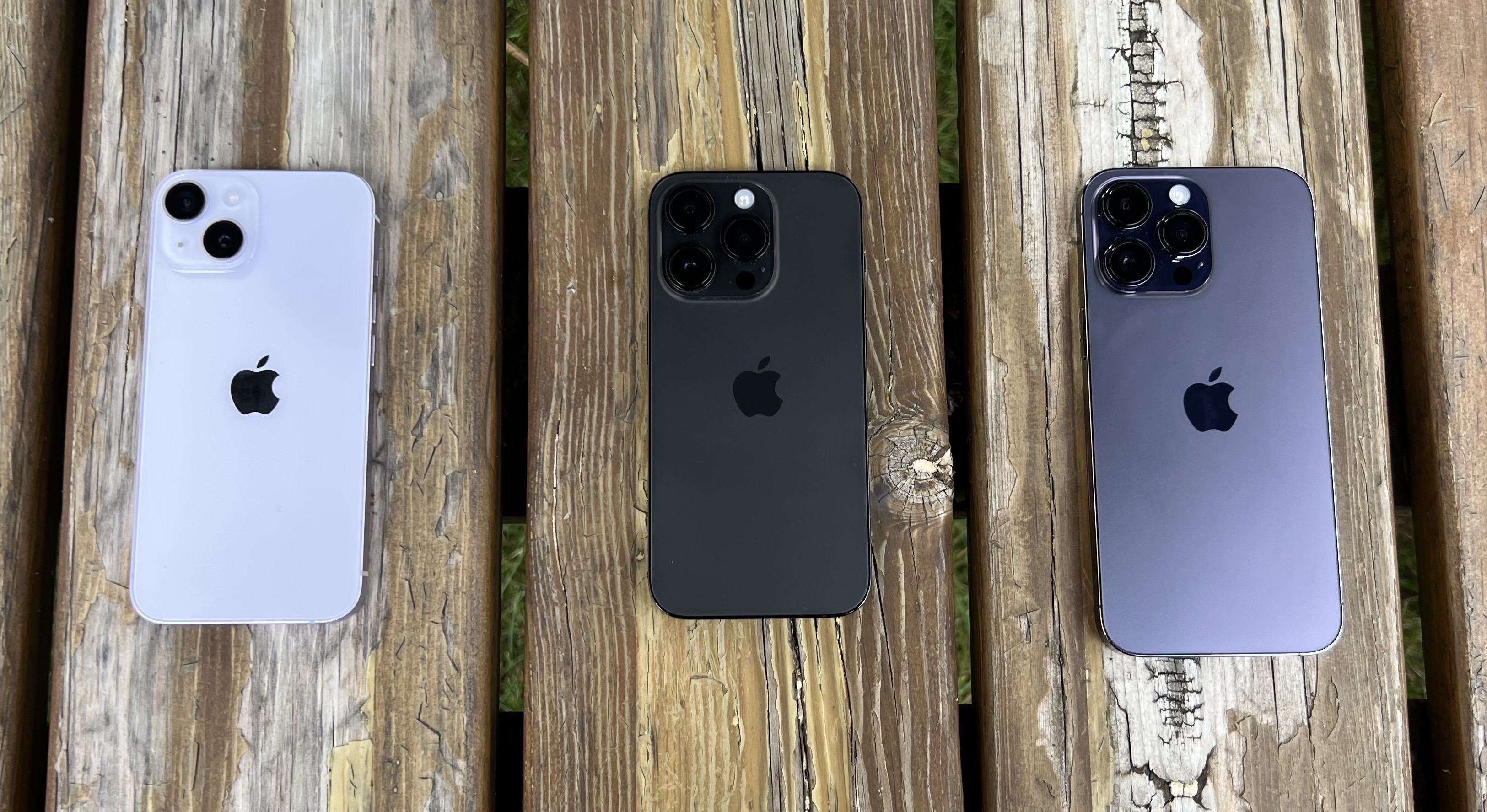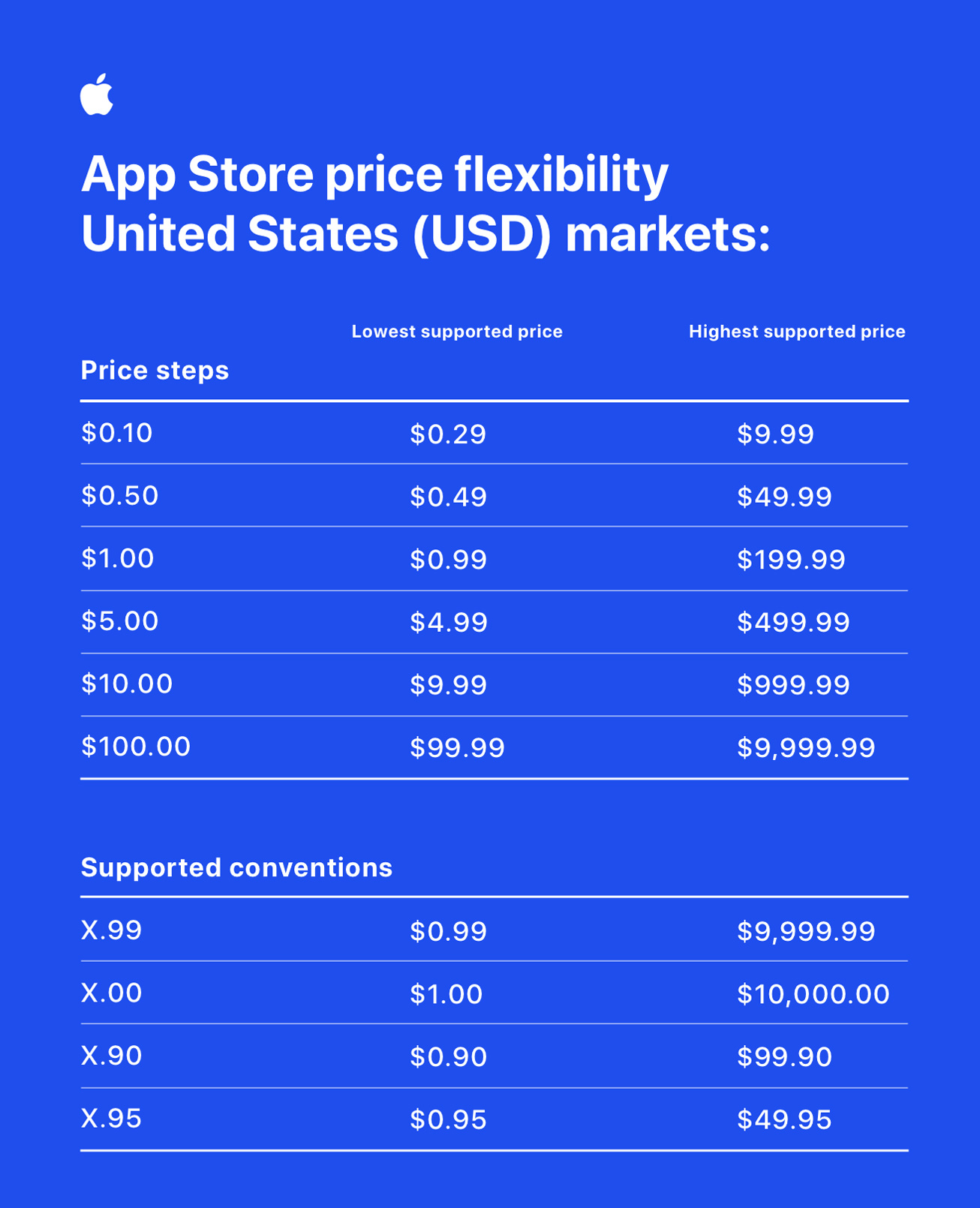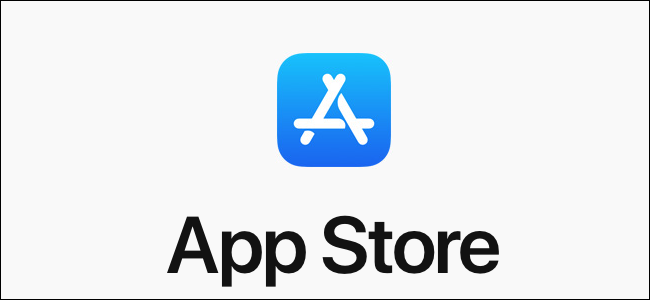Changes may help devs handle inflation, exchange rates, and new content types.

The backs of the iPhone 14, iPhone 14 Pro, and iPhone 14 Pro Max.

A new pricing cheat sheet provided by Apple.
Apple unveiled the most sweeping change yet to the App Store pricing model it applies to all apps submitted to its app stores on Tuesday. In the new system, app developers will have substantially more control over how they price their apps.
Apple's App Store has a history of offering relatively limited price point options to app and game developers. With the new policies, the minimum app price has dropped from $0.99 to $0.29, and the maximum has risen from $1,000 to $10,000. Prices can include $0.10, $0.50, $1, $5, $10, and $100. Supported conventions include X.99, X.00, X.90, and X.95.
Here's Apple's specific wording:
Under the updated App Store pricing system, all developers will have the ability to select from 900 price points, which is nearly 10 times the number of price points previously available for most apps. This includes 600 new price points to choose from, with an additional 100 higher price points available upon request. To provide developers around the world with even more flexibility, price points—which will start as low as $0.29 and, upon request, go up to $10,000—will offer an enhanced selection of price points, increasing incrementally across price ranges (for example, every $0.10 up to $10; every $0.50 between $10 and $50; etc.). See the table below for details.
The prices can be set on a per-country basis. This allows developers to respond to inflation and shifts in exchange rates. Developers can set a base price for a storefront and currency they know well, and they will see autogenerated suggestions for prices for other regions and currencies—which they can either accept or replace with their own chosen prices.
Apps that offer auto-renewable subscriptions will be able to leverage these changes starting today. Developers of apps that don't have subscriptions will have to wait until an unspecified date in the spring of 2023.
Before now, most changes to the App Store's pricing system were additions of new types of charges, whether expanded in-app purchases or subscription models. Beyond those additions, this is the most substantial change to the App Store's pricing model and policies since it launched.
Several forces paved the way or contributed to this change. In 2021, Apple agreed to loosen pricing restrictions in the wake of a class-action suit by a coalition of third-party developers. More broadly, the company has faced intense regulatory scrutiny by lawmakers and public criticism by developers. Like many other recent App Store policy changes, this shift may be an attempt to preempt future crackdowns.
The changes have also been made to help Apple and the developers in its ecosystem grapple with a recent volatile economic landscape, with higher-than-usual inflation and exchange rate fluctuations. It's also possible that Apple is introducing these new prices to prepare for new types of content, tools, and experiences that may be sold for its upcoming mixed reality headset, which will likely launch in 2023.
Listing image by Samuel Axon



3175x175(CURRENT).thumb.jpg.b05acc060982b36f5891ba728e6d953c.jpg)
Recommended Comments
There are no comments to display.
Join the conversation
You can post now and register later. If you have an account, sign in now to post with your account.
Note: Your post will require moderator approval before it will be visible.